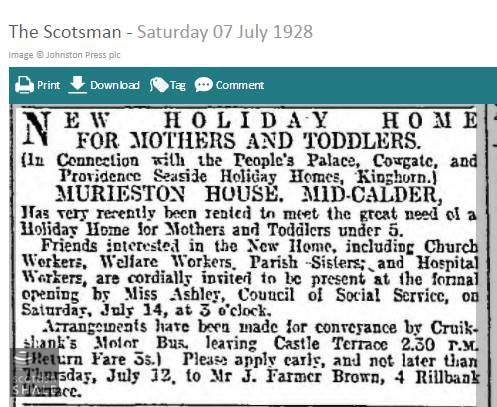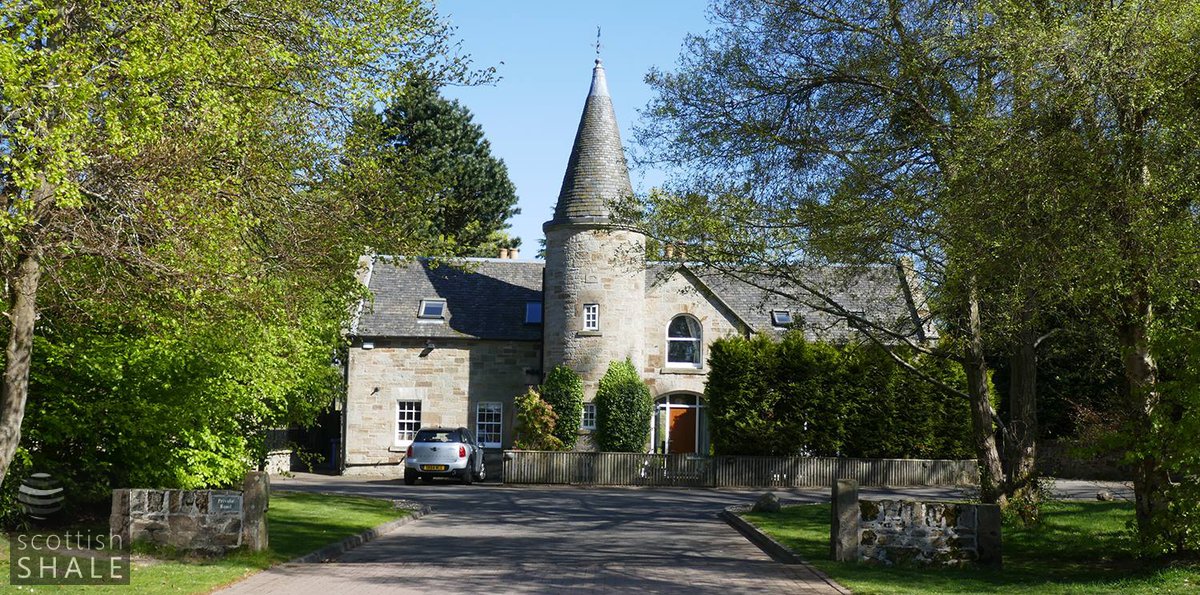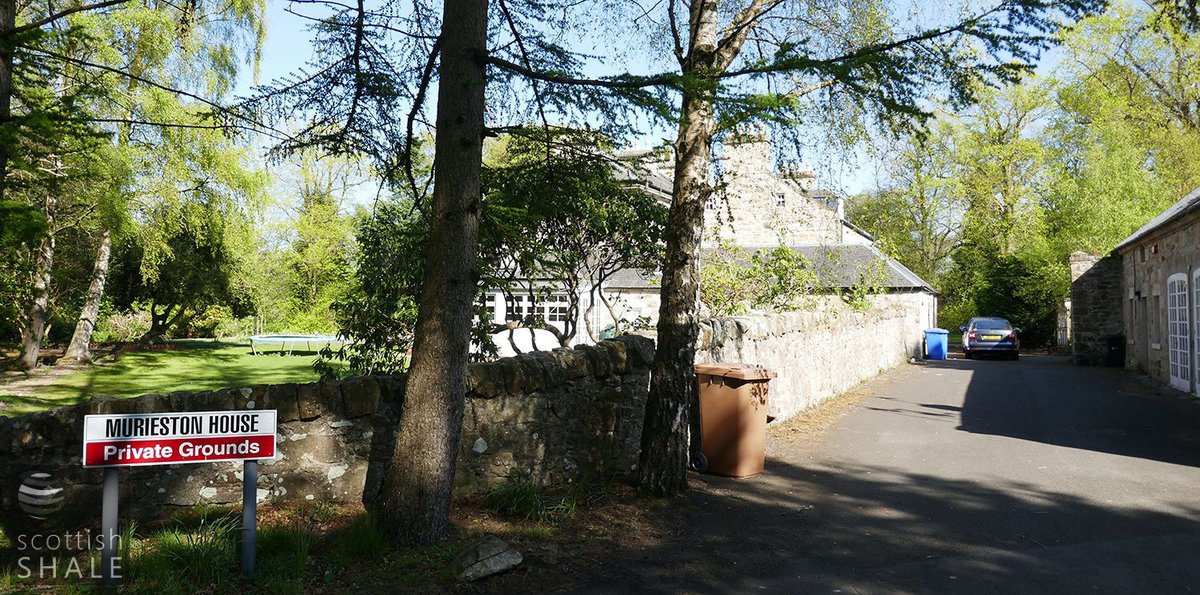The Work Colony
Social purpose on the Murieston estate
F17016, first published 8th May 2017
The Edinburgh Distress Committee was set up in the early 20th century to combat unemployment and destitution by offering paid jobs to workmen of good character who had fallen upon hard times. Their work was funded through a mix of government support and public subscription.
In 1907 the Distress Committee purchased the 202 acre Murieston estate as a “work colony” where large numbers were put to work improving the fertility of the heavy clay soil and establishing smallholding plots where fruit and vegetables would be grown for market. Some men were accommodated in the outbuildings of Murieston house, but most traveled daily by train to Newpark station.

The improvement process involved removing topsoil from 3ft wide strips of land, excavating 18 inches of subsoil, backfilling this with “street refuse” before replacing the top soil. The rubbish was transported from Edinburgh in railway wagons, and sidings were progressively extended across the fields as the work advanced. This pioneering social work was celebrated as a great success, but by 1914 the smallholders who had taken on 15 acre plots of improved land were complaining that they were unable to make a living; that the careless improvement work had resulted in loss of much of the original topsoil, and that the ground was now “puddled like dough” and a “hotbed of weeds”.
From 1912 Murieston house was used as a farm home for boys; “town-bred lads who on leaving school were becoming loafers” and were “aimless and rudderless”. They were put to work cultivating the fertile soils of the mansion gardens, further infuriating the smallholders.

During the first world war, Murieston offered light work to wounded soldiers and then served as an “epileptic colony” (presumably for those suffering from shell shock?). Estate work included planting willow for basketmaking. Unrest occurred when soldiers who understood that had been sent to Murieston to convalesce were forced to undertake heavy labour. As a consequence many “got into undesirable company in adjoining villages”.
Some land reclamation work resumed after the war, but in 1922, having completed most of the land improvements, the distress committee agreed to sell the estate. For a period during the 30's, and during World War 2, Murieston served as a nursery and family holiday home, however all thoughts of market gardening seems to have been abandoned.
In the 1990's, plans to build houses on the lands of Murieston turned public attention to potentially toxic rubbish that had laid buried and forgotten beneath the green fields and pasture. Ultimately Livingston Development Corporation were required to remove huge volumes of contaminated soil prior to construction of new houses.The Edinburgh Distress Committee was set up in the early 20th century to combat unemployment and destitution by offering paid jobs to workmen of good character who had fallen upon hard times. Their work was funded through a mix of government support and public subscription.

In 1907 the Distress Committee purchased the 202 acre Murieston estate as a “work colony” where large numbers were put to work improving the fertility of the heavy clay soil and establishing smallholding plots where fruit and vegetables would be grown for market. Some men were accommodated in the outbuildings of Murieston house, but most traveled daily by train to Newpark station.
The improvement process involved removing topsoil from 3ft wide strips of land, excavating 18 inches of subsoil, backfilling this with “street refuse” before replacing the top soil. The rubbish was transported from Edinburgh in railway wagons, and sidings were progressively extended across the fields as the work advanced. This pioneering social work was celebrated as a great success, but by 1914 the smallholders who had taken on 15 acre plots of improved land were complaining that they were unable to make a living; that the careless improvement work had resulted in loss of much of the original topsoil, and that the ground was now “puddled like dough” and a “hotbed of weeds”.
From 1912 Murieston house was used as a farm home for boys; “town-bred lads who on leaving school were becoming loafers” and were “aimless and rudderless”. They were put to work cultivating the fertile soils of the mansion gardens, further infuriating the smallholders.
During the first world war, Murieston offered light work to wounded soldiers and then served as an “epileptic colony” (presumably for those suffering from shell shock?). Estate work included planting willow for basketmaking. Unrest occurred when soldiers who understood that had been sent to Murieston to convalesce were forced to undertake heavy labour. As a consequence many “got into undesirable company in adjoining villages”.
Some land reclamation work resumed after the war, but in 1922, having completed most of the land improvements, the distress committee agreed to sell the estate. For a period during the 30's, and during World War 2, Murieston served as a nursery and family holiday home, however all thoughts of market gardening seems to have been abandoned.
In the 1990's, plans to build houses on the lands of Murieston turned public attention to potentially toxic rubbish that had laid buried and forgotten beneath the green fields and pasture. Ultimately Livingston Development Corporation were required to remove huge volumes of contaminated soil prior to construction of new houses.
Above left (1): From the 1908 annual report of the Edinburgh distress committee. By far the majority of those supported by the committee were employed at Murieston.
Above left (2): New roles in the 1920's.
Above right: From the 1908 annual report of the Edinburgh distress committee. Only those of good character were offered work at Murieston; references were usually required from former employers.

